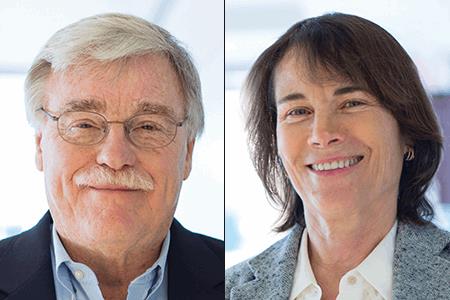Companies To Watch: Madrigal Pharmaceuticals
By Wayne Koberstein, Executive Editor, Life Science Leader
Follow Me On Twitter @WayneKoberstein
Taking on NASH and other liver diseases by targeting the thyroid hormone beta receptor.
SNAPSHOT

WHAT’S AT STAKE
Liver damage is an old concept few people probably seek to understand further. But what does the damage actually entail? How and where in the liver does it occur? According to the current science, morbid liver conditions such as NASH cause damage right down to the intracellular level, crippling the organelles and the cytoskeleton of individual liver cells. Madrigal came into being based on understanding how the cellular damage might occur, with a key component being insufficient activity of thyroid hormone specifically in the liver.
Thyroid hormone is essential to normal liver function, and the livers of NASH patients are typically hypothyroid, but THR has multiple effects on the liver through two types of receptors, alpha and beta, each with a specific set of functions. Why then target only THR-β, not also THR-α? In short, it is because agonizing the beta form addresses the key features of NASH without causing side effects such as increased heart rate or osteoporosis, as targeting the alpha form does. A THR-β agonist treats the metabolic syndrome associated with fatty degeneration, lipotoxicity, inflammation, “ballooning” and apoptosis of liver cells, and fibrosis in NASH. As a bonus, the Madrigal drugs appear to lower LDL cholesterol and other lipids such as triglycerides overproduced by the liver in the course of the disease.
The foundational R&D for the company’s drug candidates began about 15 years ago in the metabolic research group at Roche in Nutley, NJ, under the leadership of Madrigal’s founder, Rebecca Taub, M.D. Taub was already an industry veteran at that point but one with an entrepreneurial bent. When she left Roche in 2008, she managed to license the program from Roche and started searching for a way to continue it in a small company. “I was very interested in these THR-β agonists for NASH therapy long before the NASH area exploded in the past few years,” she says. First, Taub transferred the license to a small public company, VIA. A few years later, VIA spun off Madrigal, along with Taub’s metabolics program. Now chief medical officer and head of R&D, Taub served as Madrigal’s CEO until Paul Friedman, M.D., joined the company in 2016 as chairman and CEO. Friedman is also a long-time industry executive.
Friedman took over as CEO following Madrigal’s reverse merger with a subsidiary of Synta, which took the company public and generated funds to move the metabolics program forward. “Becky and I put money into a private placement before the reverse merger closed to pick up the pace in the drug development and get the two studies started,” Friedman says. Taub explains that her group at Roche used a novel assay to assess the function of its test molecule at the THR-β receptor: “It wasn’t a simple binding assay. It looked at the ability of the compound to interact with the receptor and regulate the THR-β hormone in the liver. From bench experiments to animal studies to human studies, we’ve shown our molecule is unique in its THR-β receptor activity,” she says.
“Our molecules are highly protein-bound and have a polarity that prevents them from diffusing into cells and from crossing the blood brain barrier,” adds Friedman. “They are taken up selectively by transport proteins in hepatocytes, which is highly useful from both safety and targeting standpoints.”
This is a good time to watch this company. Madrigal expects to begin seeing top line Phase 2 trial results on MGL-3196 in late 2017, with more released in 2018.
Vital Statistics
Employees: 9
Headquarters: Conshohocken, PA
Finances:
Public: Via the founding merger in 2016
Raised: $45M via additional equity financing
Largest Investors: Bay City Capital, Baker Brothers, SQN LLC, Adage Capital Management, Rock Springs Capital Management, Armistice Capital
Latest Updates:
June 2017: $35M equity financing
August 2017: Completion of enrollment in Phase 2 proof-of-concept study with MGL-3196 for treatment of NASH
